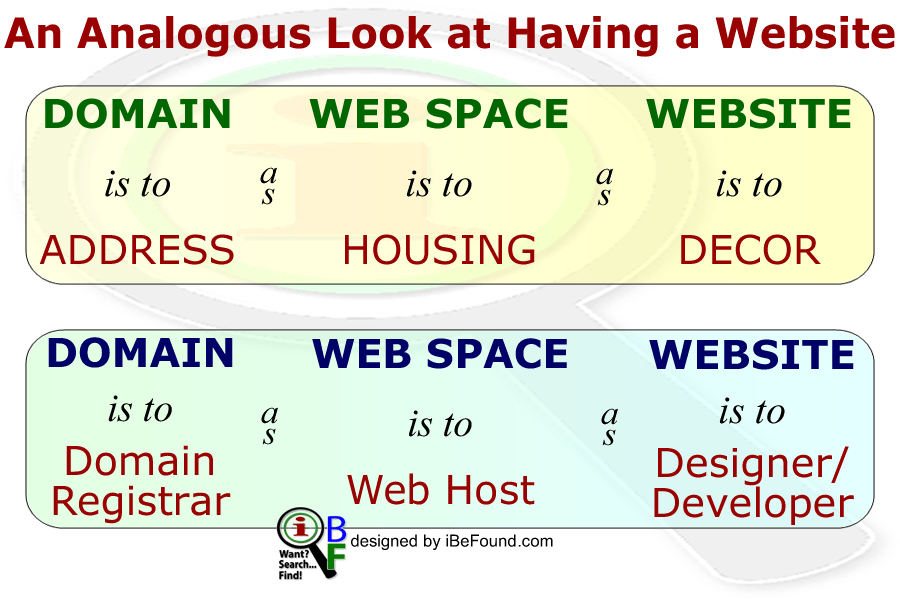- Tap for Menu
- Website Design ▼
- » Custom Website Design
- » Why Love Marketing Websites
- » Explore Website Features
- » Web Hosting Options
- » Website Design Process
- » Website Maintenance
- » Payment Options
- » Compare Website Options
- » Questions & Objections
- Portfolio ▼
- » ALL Website Examples
- » By WEBSITE TYPE ►
- » » 1PAGE Biz
- » » INTRO Biz
- » » BASIC Biz
- » » STANDARD Biz
- » » eCOM Sites
- » By BIZ NICHE ►
- » » Hospitality
- » » Product Sellers
- » » Professions
- » » Skilled Trades
- Testimonials
- Learning Center
- About ▼
- » Who We Are
- » Contact Us
How to Select a Well-Equipped Web Space
- Navigation
- Website Design ▼
- » Custom Website Design
- » Why Love Marketing Websites
- » Explore Website Features
- » Web Hosting Options
- » Website Design Process
- » Website Maintenance
- » Payment Options
- » Compare Website Options
- » Questions & Objections
- Portfolio ▼
- » ALL Website Examples
- » By WEBSITE TYPE ►
- » » 1PAGE Biz
- » » INTRO Biz
- » » BASIC Biz
- » » STANDARD Biz
- » » eCOM Sites
- » By BIZ NICHE ►
- » » Hospitality
- » » Product Sellers
- » » Professions
- » » Skilled Trades
- Testimonials
- Learning Center
- About ▼
- » Who We Are
- » Contact Us
Web Space - Part of Web Presence
In an earlier article on establishing a web presence, we concluded that the minimum web presence a business should have is a website with a built-in blog. This involves a few vital ingredients as this formula shows…
Website = Domain Name + Web Hosting + Web Design
The following infographic provides…
Guidelines on choosing and registering a web address for your website were discussed in detail in the articles, How to Secure a Well-Chosen Domain Name and Is YOUR Domain Registrar Proving its Worth?
Now, we turn our attention to the matter of finding appropriate housing for your website.
Understanding Web Space
As our analogy above shows, web space is comparable to housing. It is WHERE your website lives. More precisely, web space is the disk space on a web server where your website files are stored or hosted.
Web hosting is the process of making a website accessible via the Internet by hosting (storing) the relevant files and applications on a web server.
Here’s a visual explanation on the basics of web hosting:
Unless you have the time, expertise and resources to create and manage a web server yourself, you will need to acquire web space for web hosting through a web host – a company that leases out web space to others.
Web hosts are also known as web hosting providers. They are the property managers of the online world.
Web Space and Types of Web Hosting
Just as housing comes in a variety of shapes and sizes, so too does web hosting. Which one would be best for you would be dependent on a variety of factors, including:
- type of website (static vs. dynamic)
- size of website (number of pages, files, media elements, etc.)
- purpose of website (informational vs. ecommerce vs. social networking)
- current and expected traffic pattern (number of daily/monthly visitors)
- web management resources (self vs. in-house tech team vs. outsourced support)
- technical expertise (complete novice to web expert)
- your budget (limited vs. moderate vs. limitless)
The three main types of web hosting are:
- shared hosting – apartment-style living
- VPS hosting – townhouse-style living
- dedicated hosting – detached-house-style living
See the web hosting comparison below for further explanations…
Image courtesy HostGeek
Selecting a Well-Equipped Web Space
Now, let’s determine which type of web space and web hosting is right for you. Shared hosting is the right choice for most individuals and small businesses. More likely than not it will be your choice as well.
However, shared hosting accounts are not created equal. Just as there are differences from one apartment building to another, and there are different types (studio, 1-bedroom, 2-bedroom, etc.) and styles (loft, basement, garden, etc.) of apartments, so too, there are variations in shared hosting providers and packages.
Before you begin your search for the right apartment in the right building for your website, you should first determine your needs as far as amount of web space (think studio vs. 2-bedroom) and amount of bandwidth (think access roads – side street vs. highway) are concerned.
How Much Web (Disk) Space Do YOU Need?
The web space or disk space requirements for a 10-page informational website is much less than those for a database-driven ecommerce website having many product pages and a membership account section like Amazon, or a video-sharing site like YouTube.
Disk space will be used up not just by the components of your website (files, images, videos, databases, etc.) but also by any related email accounts created on the web server as well as any back-end (i.e. behind-the-scenes) hosting features like a shopping cart or secure payment processing.
According to the statistics compiled by WebSiteOptimization.com, the average page size has grown from 2.3 KB in 1995 to 1600 KB (~1.6 MB) in 2014. This is due to moving from purely text-based websites to more graphic-intensive ones.
If your website has already been built and is stored on your computer or that of your web designer, then you can start by adding up the total size of all the folders containing your web files to determine your MINIMUM disk space requirements.
If your website is not yet been built, then knowing the type, size and purpose of your website will assist in estimating the MINIMUM web space needed in your hosting package.
For example, a 50-page website with an average page size of 1.5 MB (~1500 KB) would require at minimum a disk space of 75 MB.
Once you’ve calculated your minimum disk space, DOUBLE or triple it to account for other space-filling things like emails accounts and databases that you might have as part of your hosting account. The value you come up with will be your guide when you begin to search for a web hosting provider.
How Much Bandwidth Will You Need?
When you start looking for a web host, you’ll notice that in describing their various hosting plans they talk about how much bandwidth is allowed in each. What exactly are they referring to?
First, it should be noted, that when hosting companies say bandwidth, they actually mean data transfer.
You see, in the computing world, BANDWIDTH is a measure of the RATE (i.e. how fast or slow) at which data is transferred. It tells you how much data can be transmitted over some connection in a given time frame. Bandwidth is measured in bits per seconds (bps).
Bandwidth is directly related to the network connections between (and within) computers. Some network connections allow single-lane transfer while others are equipped for multi-lane transfers. In general, more lanes equate to more data being transferred in a given time.
Bandwidth is NOT data transfer!
Despite the common misuse of the word bandwidth in the web hosting industry, what they are actually referring to is monthly DATA TRANSFER – the AMOUNT of data that is transmitted to and from your website during a given month. This is measured in bytes, as in MB (megabytes), GB (gigabytes), or TB (terabytes).
When you upload your website to your hosting account, or update your blog you are transferring data. Whenever someone (including you) visits (or refreshes) a page on your website, data is transferred to their browser and converted into a viewable format. If someone downloads a PDF file or video that is hosted on your website, data is transferred.
There are a few popular analogies that seek to simplify an explanation of the connection between data transfer and bandwidth including:
- water in a hose or pipe
- vehicles on a highway
So the question then becomes, what are your data transfer requirements?
In general, the biggest contributor to your data transfer usage is your website traffic – the amount of web visitors you have. So, to make a guesstimate of your monthly data transfer, you’ll need the following information:
- number of daily visitors
- number of pageviews (i.e. pages visited per visit)
- average size of web pages (try the Webpage Size Checker Tool)
Then use this formula:
OR, enter the information into the Server Requirement Calculator for automated calculations.
Once you’ve gotten an estimate, DOUBLE or triple it and use that value as your minimum requirement to ensure that you’re not cutting it close as it could end up costing you in the long run.
According to the comments of various hosting providers at the WebHosting Talk forum, most websites that opt for shared hosting typically use less than 10GB of data transfer each month with most using < 5GB.
Where to Get a Well-Equipped Web Space
Now that you’ve narrowed down your website housing needs by type of hosting, amount of disk space, and monthly data transfer, it’s time to find the right apartment (i.e shared hosting account) in the right building (i.e. web server) that fits your needs by comparing property managers (i.e. web hosts).
Our next article, Is Your Web Hosting Provider Proving Its Worth? will assist you in making a wise choice.
In the Meantime…
For a more in-depth look at web hosting, you might find the following resources helpful:
- Help! I’m Getting a Disk Space Warning!
- Why “Unlimited Hosting” is Actually Limited! Understanding Your Limitations and Know How You Will be Affected.
Also, visit our “Web Hosting Guidelines” board on Pinterest for more insights.
Follow iBeFound International Ltd's board Web Hosting Guidelines on Pinterest.
Time for YOUR input
- What are your views on our Analogous Look at Having a Website?
- What other bandwidth / data transfer analogies do you know?
- Business Owners: Have you determined the web server requirements for your website?
Start the Conversation with a Consultation Request!
Check Out NZ Locations We Serve
Auckland Bay of Plenty Canterbury Gisborne Hawke's Bay Manawatu-Wanganui Marlborough Nelson Northland Otago Southland Taranaki Tasman Waikato Wellington West Coast See Recent Website Design Projects
© 2014 - 2025 iBeFound Digital Marketing,
a subsidiary of iBeFound International Ltd
PO Box 321, Hāwera 4640
021 227 9922





